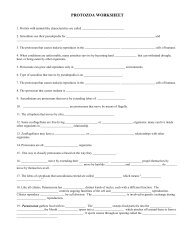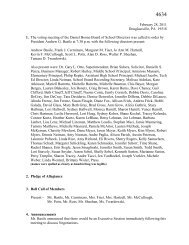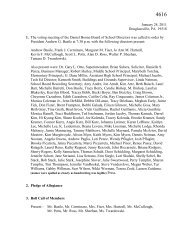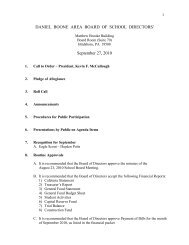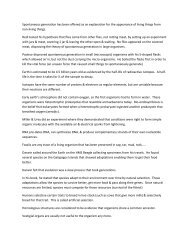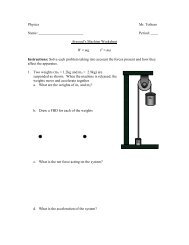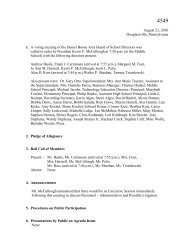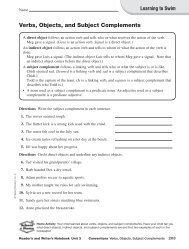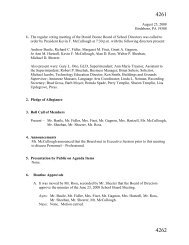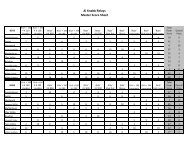THEORY OF EVOLUTION
THEORY OF EVOLUTION
THEORY OF EVOLUTION
Create successful ePaper yourself
Turn your PDF publications into a flip-book with our unique Google optimized e-Paper software.
<strong>THEORY</strong> <strong>OF</strong> <strong>EVOLUTION</strong><br />
Section 15-2: Evidence of Evolution<br />
Read the passage below, which covers topics from your textbook. Answer the questions that<br />
follow.<br />
In 1668, Robert Hooke published his conclusion that fossils are the remains of plants and animals.<br />
Hooke was one of the first scientists to study fossils, principally petrified wood, with the aid of a<br />
microscope.<br />
Hooke thought the detail he saw with the microscope was too fine and precise to have been formed<br />
by the rock itself. He hypothesized that living organisms had somehow been turned to rock.<br />
Hooke’s view was shared by another scientist of his time, Nicolaus Steno. In 1669, Steno proposed<br />
the principle of superposition, which states that successive layers of rock or soil were deposited<br />
on top of one another by wind or water. The lowest stratum, or layer, in a cross section of Earth is<br />
the oldest, while the top stratum is the most recent. Thus, fossils within a single stratum are of the<br />
same approximate age. Using Steno’s principle, observers could establish the relative age of a<br />
fossil; that is, they could say that a given fossil was younger or older than another fossil. The fossil’s<br />
absolute age (its age in years) could be estimated from the amount of sediment deposited above<br />
the fossil or by using the radiometric dating of a nearby rock layer.<br />
Fill in the blank to complete each sentence.<br />
SKILL: Sentence Completion<br />
One reading skill is the ability to complete an incomplete sentence by logically determining<br />
what will complete the unfinished thought.<br />
1. Robert Hooke was one of the first scientists to study fossils through a _________________________________________ .<br />
2. His observations led Hooke to conclude that fossils are the remains of ________________________________________ .<br />
3. According to the principle of superposition, fossils in the same stratum are about _______________________ .<br />
Circle the letter of the word or phrase that best completes the statement.<br />
4. The top stratum in a cross section of Earth is the<br />
a. youngest.<br />
b. layer most likely to contain fossils.<br />
c. oldest.<br />
d. Both (a) and (b)



